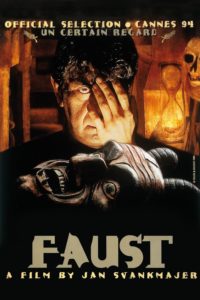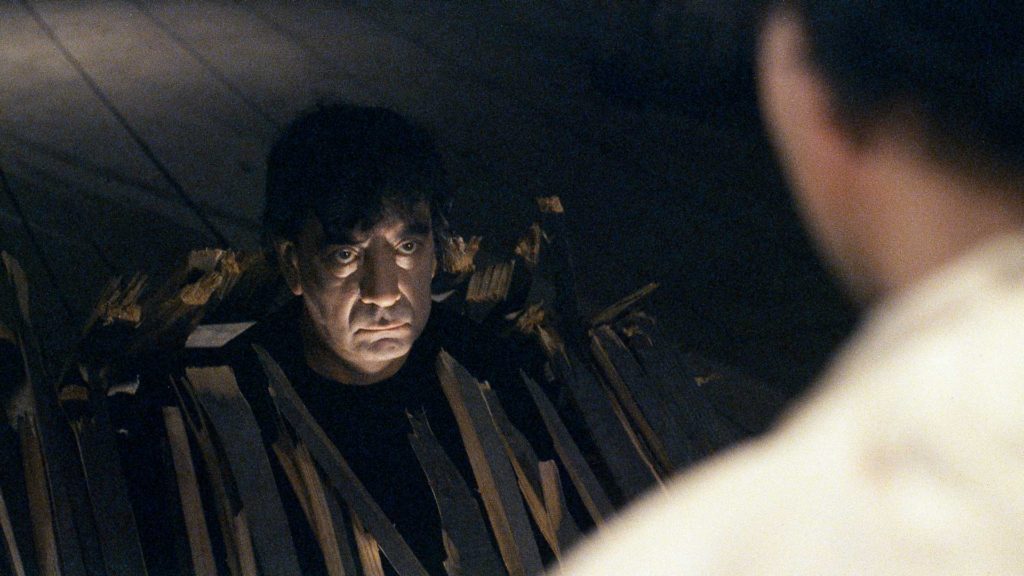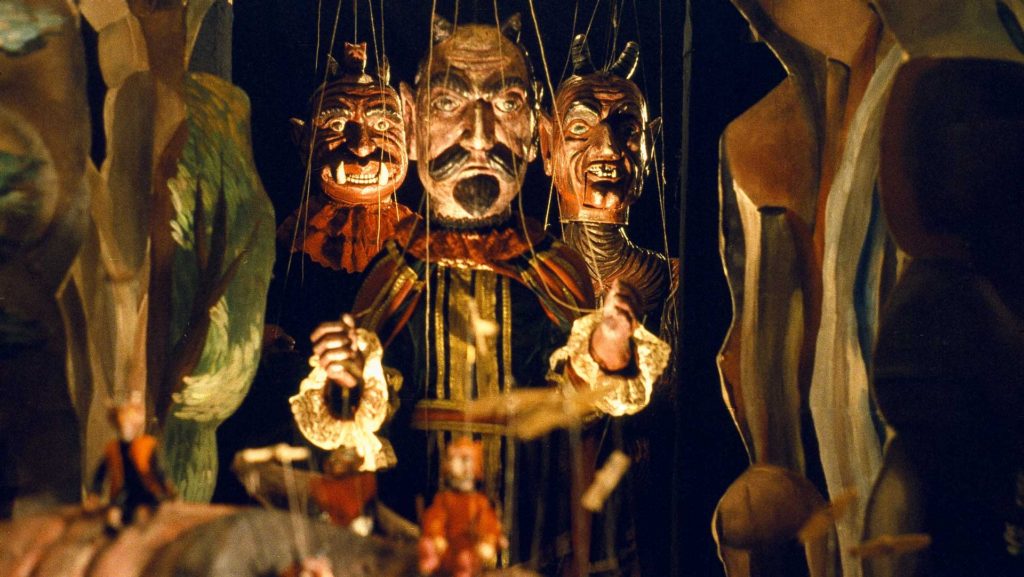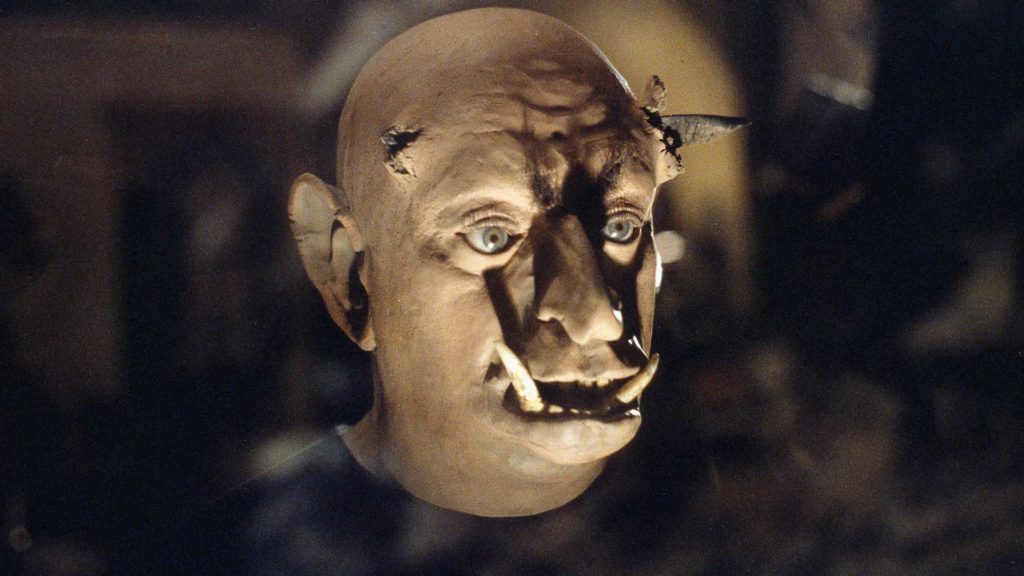Czech Stop-motion Animation Legend Jan Švankmajer’s Off-kilter Version of the Classic Myth Returns to Virtual Cinemas.
JAN ŠVANKMAJER/1994

Undulating masses of clay and teeth, decrepit man-sized marionettes, chimera of bone and taxidermy, and Man. These are the myriad strange creatures that populate the world of Jan Švankmajer’s second feature film, 1994’s Faust. Švankmajer combines his own vision of the alchemist Faust’s deal with Mephistopheles with a pick ‘n mix of elements from Goethe, Marlowe, and various folk tellings. The results are hardly a philosopher’s stone, but there is still plenty of gold to be found amid the lead.
Švankmajer is best known for his work in stop-motion animation, carrying on the legacy of Czech stop-motion artistry established by the great Jiří Trnka and Břetislav Pojar. A prolific director of fascinating animated short films in the 60s and 80s – Soviet censorship prevented him from making films through much of the 70s – Švankmajer’s work largely consisted of animation featuring household objects and figures made from an eclectic variety of atypical materials. Nearly three decades of short films culminated in 1988 with Švankmajer’s feature debut, Alice.
This first effort is a culmination of many elements from Švankmajer short works and serves to inform much of Faust’s style. Both films are stop-motion/live-action hybrids, loose adaptations of classic literary works that employ an interplay of eerie and grotesque imagery with a childlike playfulness. Though Faust is in many ways a step back, with its hodge-podge pacing and relative lack of animation in favor of live action, it is still an enjoyably surreal piece with some effective pitch-black comedy and inventive visuals.
Faust retells the age-old story in the Prague of the early 90s, as a middle-aged man (Peter Cepek) happens upon a map that leads him to a dilapidated theatre. Here, he slowly becomes entrenched in his role as the eponymous alchemist, where all but he is played but man-sized wooden marionettes. He brings life to a horrific baby golem, performs strange satanic rites, and makes a deal with Mephistopheles for 24 years of self-indulgent pleasures. Eschewing theology to perform strange and miraculous magic, Faust is inevitably forced to confront his debtors when Mephistopheles and his devils arrive to claim that which they are owed.

The plot of Faust is an odd thing to discuss; it goes along at its own meandering pace, frequently becoming distracted with the primary narrative and exploring odd interludes. A cafe with a font of wine jammed into a table, an intermission where two recurring characters steal food and drink, women eating soup in a field, an extended sequence of Faust’s assistant playing a prank on a devil. Švankmajer at times seems to become distracted, disinterested in his own film numerous times through the film’s first two-thirds. The interludes can be quite enjoyable – the assistant’s prank especially is wonderfully out of place in the film – and it seems that the intent is to create a sense of dreamlike surreality.
Yet, the individual pieces, enjoyable as they are, don’t quite come together as a whole. Long stretches where we are stranded with the live cast alone can leave the viewer pining for the puppets and effects animation, as the live cast is rarely especially enthralling. While one does feel that these scenes are necessary, as they help to delineate the world as is with the theatrical framing device, the cafe with the wine font is one of the few that captures the attention.
When comparing the film with Alice one cannot help but feel that Faust’s title character is a substantial part of the problem with the purely live-action sections of Faust. Alice is a small child, providing narration that filters her experiences through her perspective as she explores the off-kilter nightmare of Wonderland. Faust, or rather the man who falls into the role of Faust, is not dissimilar to Alice in his general lack of agency but doesn’t serve the piece nearly as well as Alice does hers.

When his character isn’t playing the role of Faust, Cepek’s performance is that of a simple, boorish man who moves through life in a sort of trance. Strange things happen around him, but are rarely actually presented through a personal lens, with the film instead opting to cut from the more interesting action to his typically muted response. The effect is occasionally comical, and intentionally so, but wears thin from overuse. When the man is “performing” as Faust and interacting with the marionettes and animated figures, Cepek can demonstrate considerably greater range, and does quite a bit to temper the most lackluster sections.
However, those scenes which do feature animation and effects work are always a delight. Švankmajer’s obsession with texture displayed in previous efforts brings an incredible life to the proceedings. Roughhewn wooden marionettes with fading paint and countless imperfections. Mounds of clay which assemble themselves into figures and faces, morphing as they speak and act, often with glass eyes and humanoid teeth that look uncanny when combined with their grey matte pseudo flesh. Mephistopheles, taking the form of Faust and speaking in a jerky, unreal fashion as the burst floorboards that surround his head subtly shift.
The heavily featured marionettes deserve special regard. Hearkening back to not only street performances of Prague’s past, but the animation tradition from which Švankmajer’s own career could bloom, they manage to be wonderfully distinct and expressive despite their unmoving faces. Seeing them interact with the human characters is strange and oddly delightful experience, as they manage to jape and cavort while maintain a sort of eerie presence. While they are primarily filmed as men in costumes, in several sequences that are animated via stop-motion, and like magic the juxtaposition makes them seem so much more than merely puppets or men in suits. These marionette are the real stars, not only of the diegetic theatrical performance, but of Švankmajer’s Faust itself. At times genuinely quite funny, these entrancing and distinct figures are brought to life with a versatility and liveliness that few but Švankmajer can.
Švankmajer’s transition to a feature that more heavily incorporates live-action elements is a messy experiment, certainly, but I hope my criticism of Faust is not conflated with dislike. My frustrations with it stem from the fact that it does so much incredibly well. Its dreamlike surreality, magnetic animation, and pitch-dark comedy stand in stark contrast against the failings of the more traditionally presented sequences. And even many of those scenes manage to muster moments that blend the absurdly comic with the disquieting in a fabulous fashion. Faust is – like Švankmajer’s animated subjects – imperfect, yet even those imperfections are richly textured and distinct.


